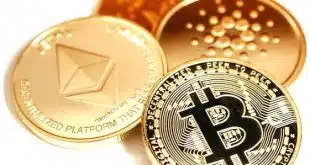Another sort of unicorn. Here’s why it’s more accurate to speak of super-power apps.
Mobile payments in the United States remain a minority, accounting for just under 4% of all payments made in-person. Even worse, 25% of U.S. consumers are still using paper forms of payment, including checks. Fintech-supplied bank accounts can be found on any street corner, all dependent on plastic cards.
Yes, the U.S. mobile-payments market has some catchup to do. And what better way to get the job done than to turn it over to a super hero? What we need is a solution that is faster than a speeding bullet, more powerful than a locomotive, and able to leap tall buildings in a single bound. Look, up in the sky, it’s a bird, it’s a plane, it’s Super … App!
So, what makes a super app super? The origin—I call it the “originating service”—of any super app is the one feature that seeds its market share, such as chat in WeChat or ride-sharing in Grab or Go-Jek. From that market scale, one builds out more and more usability within the app.
The key characteristic of these originating services is that they must be used every day, even multiple times per day, which pins the app to its users’ lifestyle. A lot of apps in the U.S.fit this bill, including top banking apps, the Starbucks App, PayPal, the Apple Wallet, Amazon, and Google. Also, other apps like Facebook, Tik Tok, and YouTube.
Next, let’s consider the business model for these apps. The revenue source is a combination of businesses paying to be included in the app, value-add services, and advertising. Not included in this list is interchange fees and interest on loans or other penalty or usage fees. That’s one reason most banking wallets have failed.
Culling our list of solutions with this filter leaves us with PayPal, Amazon, and Google, as well as social-commerce platforms like Facebook, Tik Tok, and YouTube.
How about acceptance? In the U.S., 56% of merchants have enabled digital-wallet payments at the point of sale. Anyone who’s on the road a lot also knows that NFC terminals vary by retailer and by region of the country. Thus, our list gets smaller, now including PayPal and Google. But we can add in Apple Pay, Venmo, and any number of retailer-issued payment/shopping/ordering apps.
What about the available user base? In the U.S., 41% of the adult population is age 18 to 49. Some 36% are 50 plus. Our 2021 population growth rate is 0.58%. So the payments digital-first generations are smaller than payments’ first-generation population, and our overall population growth is stagnant. Finally, the U.S. is a relatively small market compared to geographies where super apps were born, such as China.
A Real Unicorn
All this means that, in a mature payments market where population growth is slowing and digital-first groups are smaller than the legacy market, motivating a consumer to use one app over another is expensive and time-consuming.
What does all this mean for a super-app like WeChat in a market like this? Well, we already have big-picture solutions in market. But I prefer calling them super-power apps, because the idea that a single application is going to dominate all others in the U.S. when it comes to commerce AND lifestyle AND payments is a real unicorn. In this context, a unicorn means a magical creature that most people believe in but have never seen.
Time and again, various segments of the market go after the prize of a single-source application, but the barriers are significant. I would even suggest that the quest itself is quixotic. It’s best left to markets that are demographically homogeneous, with strong market controls, and large unbanked segments that are unfamiliar with mag-stripe cards. That’s not the U.S.
Instead, consumers will continue to use multiple, specialized apps, like their favorite app for fast-food mobile ordering, but more regularly interact with one app for their everyday business. This is already happening. Best-of-breed digital applications are rising that respond to the needs of specific markets or demographic groups.
These are the super-power apps. For example, there’s Square, which has parlayed its brilliant takeover of the underserved-merchant market to create a suite of services for small businesses. Then there’s Venmo, now attempting to get into the in-person payment market through its loyal user base built out of college campuses around the country.
Also Chime, one of the only super-power banks I could think of that has successfully scaled a digital-only banking experience, but, to be fair, without the overhead of a real bank.
An Independent Bunch
In a real super app, a user stays in that app most of the day and can conduct all sorts of lifestyle tasks, including transit, food purchases, bill payments, money transfer, and insurance. But in our super-power app, users access the services they need the most and go elsewhere for the rest.
Why is that? Americans are an independent bunch. We like having choices, but we also don’t necessarily trust the companies that have enough capital to invest in this type of meta-strategy, like Google or Facebook. Just consider the detritus of their failed payments strategies strewn across the past 20 years.
Hate to disappoint, but there is no super-app problem here to solve. Instead, our market is using its super powers to create organizing solutions for specific users and for specific problems.
Your super-power app may be faster than a speeding bullet and mine may be more powerful than a locomotive, but by themselves, neither is Superman.
—Patricia Hewitt is principal at PG Research and Advisory Services, Savannah, Ga.





